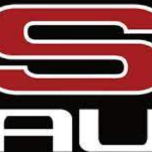Announcements
-
Latest Posts
-
By Murray_Calavera · Posted
The fab work can be as simple as a couple of silicon hoses and clamps to the factory piping. -
By joshuaho96 · Posted
Just sounds like either way you need to do some fab work to get everything to fit, so why limit yourself at that point? If the GCG high flow option is zero effort in and out swap though I'd probably do that. It's almost certainly lowest risk, lowest cost, etc. The HKS GTIII-RS option that Kapr mentioned is laughably expensive for what it is, they charge the exact same for two turbos on the RB26 so their margins are off the charts on that thing. -
Intake manifold is not a part of the issue. The turbo bolts to the exhaust manifold. That is easy. But close your eyes and picture the physical situation. That is a T3 flange on the manifold and a T3 flange on the turbo. As long as any new turbo has a T3 flange on the exhaust housing, that exhaust housing will bolt to the exhaust manifold. This places the exhaust housing in the same place as the stock one. But now move your mental attention a little further forward. The location of the compressor housing is set by the length of the turbo's core. The stock turbo had a long core. Let's say that it is..... 100mm long. So that would place the compressor housing 100mm forward of the exhaust housing. But a highflow, might well have a centre core that is shorter. Let's say that it is only 70mm long. Now the compressor housing will be 30mm further back in the engine bay than the stock one. This DOES move the turbo's compressor outlet backwards. It also moves the compressor's inlet backwards. You will very likely have to do some work to both the inlet and outlet piping to make everything connect again. I am not say this to make it out to be a bigger deal than it is. I am just pointing out that "bolt on" is sometimes not quite bolt on. The highflow from GCG that Murray linked above (https://gcg.com.au/turbo-charger-upgrade-skyline-gtst-2iu-xtrgts-s1.html ) uses a core that is the same length as the stock core, and so does not require this extra work. It will look very much like the stock turbo. No-one uses GTR turbos of any flavour (stock, or aftermarket) in a single turbo application on RB20/25. It's not a thing. Yes, people have been putting on GT3076, GTX3076 (and bigger and smaller versions of those) and G30s (of various sizes) onto RB20/25 since forever. But these are not "bolt on". Everything except the 4 bolts to the exhaust manifold change with these. And genuine Garretts are expensive. Non-gen, like Pulsar, etc, are cheaper, variously as good or nearly as good. But still not bolt on. No-one in the right mind would pay for an HKS turbo. Not in this modern day and age. Well, yes, the GCG highflow. You could ask HG what he can do to make the compressor housing sit in the original location. There are surely others doing highflows around the world. And some of the eBay/Temu ones (as reported by Dose) work and don't die. Bit of a lottery though. I would send your turbo to GCG (here in Oz) to be highflowed if you want a trivial no-extra-work option. But seriously, the work required to change inlet and outlet piping is not that hard. That's a boost control problem, not a turbo problem.
-
Thank you all for the replys 🙂 I know that intake would be different but that is one pipe at it is not that hard to get(custom one). I meant mainly bolt to the stock manifold and the turbo elbow. I looked and many sites/forums but they are just "old" with some old HKS turbos from GT-R i guess? What about some Garrets? Or any other turbo? Is there even a turbo which i can just bolt on? 😄 And yeah i know about that new HKS but that is like 2000k USD without taxes/shipping in here Iam getting a touch up tune but my "problem" is that on the "not" hot day iam getting peaks around 0,9 bar...and when it was around 15 Celsious i saw peak around 1 bar which is just too much for stock turbo. And of course turbo is old and i like to get some new one for a piece of mind 🙂
-
I'm working on the assumption that our friend Jasmine here is a Russian (or, possibly Ukrainian) spammer/spambot, based purely on the number of such that I have been having to neuter in the last few weeks. IP address for the OP above was in WA. But that could have been via VPN. Posting at quarter to 4 in the morning is a good sign of being from somewhere in Europe. The last Jasmine that I kicked in the cooch was IP addressed in Ukraine. Even that could have been via VPN, and the bitchbot could have been from Russia, Serbia, China or anywhere. Regardless, was a spambot, so I killed it with fire. The fact that our new friend Jasmine here did not respond in any way to my tart query strongly suggests to me that this OP was just the establishment phase of a user able to be activated for spamming in a week, or 3 or 10.
-


Recommended Posts
Create an account or sign in to comment
You need to be a member in order to leave a comment
Create an account
Sign up for a new account in our community. It's easy!
Register a new accountSign in
Already have an account? Sign in here.
Sign In Now